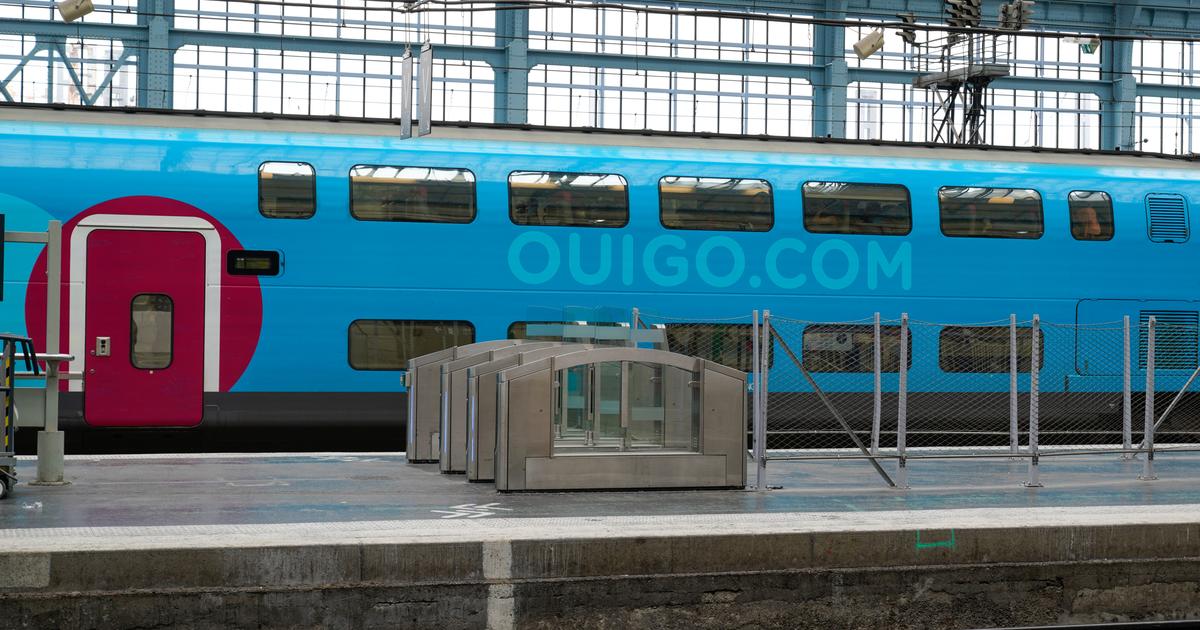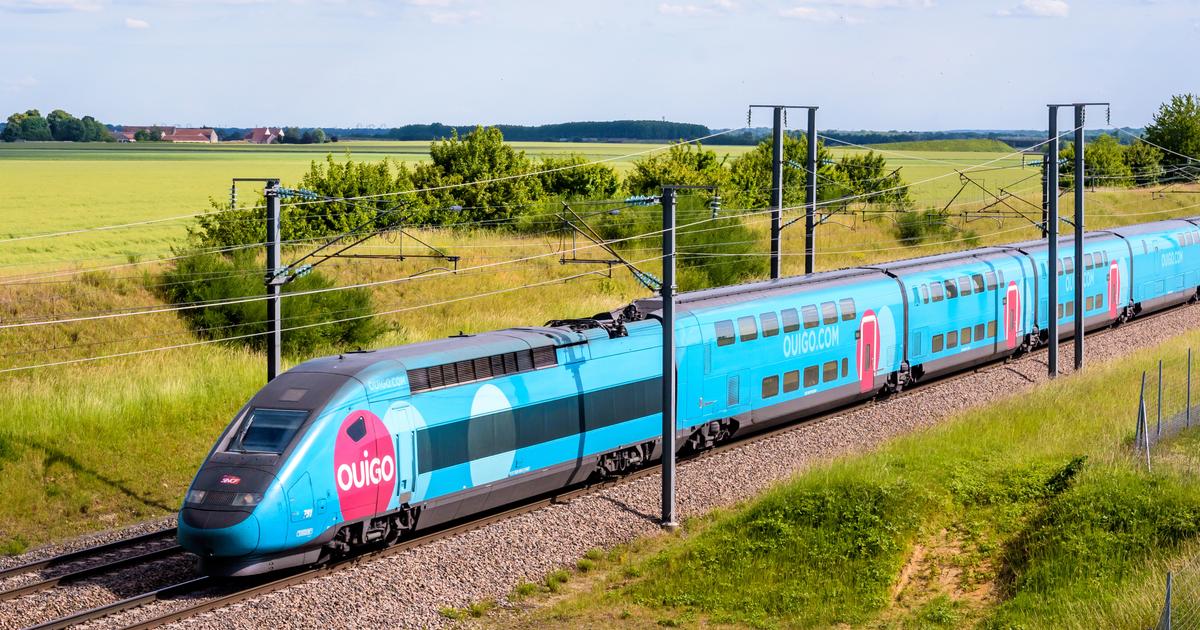This will be the longest railway tunnel in the world 1:58
(CNN) -
When a traveler thinks of Europe's high-speed trains, France's iconic Trains a Grande Vitesse (TGV) or Germany's sleek white ICE trains probably come to mind.
Those who have visited Italy have undoubtedly seen the Frecciarossa (Red Arrow) of Trenitalia or the impressive scarlet trains of its strong competitor Italo.
But the longest high-speed train network in Europe is not in Italy, not in Germany, not even in France.
That honor goes to Spain, where in the last 30 years billions of euros have been invested in new railway lines that depart from Madrid.
At 3,567 kilometers, it is the second longest high-speed rail network in the world, although it is still less than 10% of that built by China in the last decade.
Compared to China's blazing progress, the construction of new high-speed railways in Spain has been comparatively slow, hostage to volatile national and regional politics, inordinately ambitious goals, and incoherent decision-making, especially in the aftermath of the crisis. 2008 financial world.
advertising
China launches the world's fastest train
However, new railway sections continue to be opened thanks to significant support from the European Union, as Spain works to make the dream of providing fast links between Madrid and its regional capitals come true.
Ambitious plans
The Avlo service of the Spanish state operator Renfe transports passengers between Madrid and Barcelona in two and a half hours.
Jesús Hellín / Europa Press / AP
Since the first route was inaugurated, between the Madrid terminal of Atocha and Seville, in 1992, the scope of this ambitious network has reached Malaga and Granada in the south, Valencia, Alicante and Barcelona on the east coast and Santiago de Compostela, Vigo and A Coruña in the extreme northwest of the state of Galicia, whose completion is scheduled for 2022.
High-speed trains also pass through the historic cities of Segovia and Valladolid to León, located in the western region of the country, and will eventually extend to Asturias and the Basque cities of Vitoria, Bilbao and San Sebastián.
The construction of a "Y" shaped network connecting the main agglomerations of the Basque Autonomous Community began in 2006, but progress has been slow and the US $ 6.8 billion project is not expected to reach Bilbao until at least 2025.
Trains: "The decrease in the use of rail transport is notorious"
Until now, all national high-speed trains were operated by the state company Renfe under its elegant brand name AVE (Spanish High Speed).
The AVE even managed to take part of the business of the airlines, although the air route from Madrid to Barcelona is still the busiest in Europe.
Apart from airplanes, the railway also faces stiff competition from buses and private cars, fuel prices in Spain remain comparatively low by European standards and in 2019 around four million car trips were made between its two largest cities.
"Renfe runs some of the most elegant high-speed trains in Europe," explains railway expert Mark Smith, better known as "The man with seat 61".
"[Going from] Madrid to Barcelona takes only two and a half hours by AVE, well under the three or four hours from center to center, so the railroad becomes as fast as the airplane, so I would expect that the railroad dominate that market. "
Stiff competition
The Ouigo network of the French state operator SNCF has launched a high-speed rail service between Madrid and Barcelona.
Isabel Infantes / Europa Press / Getty Images
"However, AVE trains from Madrid to Barcelona have typically been priced significantly higher than comparable high-speed services elsewhere and the rail market share has not been as high as it should be."
But change seems yet to come, if we can take as an example the launch of two new low-cost and "no frills" high-speed rail operations in 2021.
Renfe's "AVLO" routes began on June 23 and offer rates starting at US $ 8.20 (€ 7) for the 621-kilometer journey between the two largest cities in Spain, which represents significant savings compared to standard rates. of the AVE, which starts at US $ 56 (€ 48).
There are approximately three round trips a day between Madrid and Barcelona, with a fourth pair of trains running to Girona and Figueres, located on the French border.
Although purple trains that travel at 330 kilometers per hour have been internally modified with second-class seats, passengers can purchase additional features when booking such as extra luggage, in-seat entertainment, seats with more legroom and groceries. board.
The list of requirements to travel in times of covid-19: this is what you have to know before you leave
Renfe now operates 20 trains in each direction between Madrid and Barcelona, a journey that lasts only two hours and 30 minutes on non-stop trains.
The national rail operator currently offers some 16,000 daily seats on a combination of AVE and AVLO services, and plans to add even more services as demand recovers after the pandemic.
Despite having the advantage of the country, AVLO was overtaken in the market by Ouigo Spain, another new low-cost operator, which carried out its first commercial services on May 10.
Travelers to France are probably already familiar with the Ouigo brand, which offers low-cost, no-frills TGV services between major cities.
Using the same formula for success, along with at least 14 500-seat TGV trains seconded by its French parent, Ouigo Spain will initially operate from Madrid to Valencia and Alicante.
The routes to Barcelona (in competition with AVLO and AVE), Seville and Malaga will be added in 2022 as part of an investment of US $ 700 million.
Easy rates start at € 9, and things like extra luggage, more comfortable seats, and refreshments are charged separately.
"The liberalization of rail transport will increase competition and attract more passengers to use this mode of transport," said Pedro Saura García, Spain's transport minister, at the launch of Ouigo Spain's services in May.
A successful formula
The arrival of new low-cost services seems to bring new energy to the Spanish high-speed rail network.
Denis Charlet / AFP / Getty Images
"This is crucial to decarbonize the transport sector and our economy and to combat climate change."
His comments reflect the experience of high-speed rail operators in Italy, where fierce competition between the state-owned companies Trenitalia and Italo has doubled the rail market share since 2008 and contributed to reducing the price of tickets by between 20 and one. 25%.
Trenitalia is preparing to deploy this experience in Spain as of next year, when it launches ILSA (Intermodalidad de Levante), the third of a trio of new high-speed operators.
ILSA is a joint venture with Air Nostrum airline, which is expected to launch commercial operations on six routes in March 2022.
While Renfe and SNCF have modified existing trains for their new operations, Trenitalia is investing US $ 943 million in 23 new Frecciarossa 1000 high-speed trains with 460 seats and a maximum speed of 360 kilometers per hour.
The new trains, which will make 32 trips a day, will compete with existing AVE services from Madrid to Seville, Malaga, Granada, Valencia, Albacete / Alicante and Barcelona, offering passengers no less than four rail options between the capital and Catalonia.
"It is still early days, but the Spanish government's plan to open the way to competition appears to be bearing fruit," adds Smith.
"The new operators have been well received by travelers, with Ouigo reporting an average passenger load factor of 90%."
"Renfe had to lower rates to compete. I am sure that now we will see a repeat of the experience in Italy."
The introduction of these new "open access" services should begin to address one of the main criticisms of Spain's high-speed program: the low frequency of trains in the new and expensive infrastructure.
Since the implementation of AVE services in the 1990s, the traffic density has been, in general, much lower than that of similar lines in France, Germany and Italy, which has led to the assertion that thousands of million euros in "political" projects of little real value.
Americans must show a vaccination certificate to enter Spain
In fact, at the extremes of the network, especially in northwestern Spain, some new lines with spectacular and very expensive civil works currently only have a couple of trains a day.
"Spain has invested heavily in building a world-class high-speed network, but until very recently it has not put the system to good use," says Keith Barrow, editor of the monthly railway magazine Today's Railways Europe.
"The government plans to increase the capacity of the trains up to 70% compared to the summer of 2019 on the three routes that are open to competition, which offers a good indication of the latent capacity in the system."
Progress has rarely been smooth.
As early as the 19th century, the country's mountainous terrain also proved challenging for early railroad builders.
An expensive process
The low-cost company Ouigo will add new routes to Barcelona, Seville and Malaga in 2022.
Pierre-Philippe Marcou / AFP / Getty Images
Many lines were forced to take indirect routes to avoid the high mountain ranges and became famous for their low speeds and long travel times.
Outside of the major intercity routes, a lack of investment made vintage steam locomotives and wooden wagons last well into the 1960s.
As in Japan after WWII, upgrading existing lines so they could reach high speeds was not an option, so a more radical solution was needed.
This came in 1992, when Seville hosted the Universal Exposition world fair for the first time.
Now known as Expo '92, this popular event served as the impetus for the construction of an entirely new 472-kilometer railway between Madrid and Andalusia.
Using French TGV technology, the railway reduced travel time to two hours and 20 minutes, with speeds of up to 300 kilometers per hour.
However, the biggest advance was the completion of the 621-kilometer high-speed line between Madrid and Barcelona in 2008.
Not only did it provide much faster connections between the country's two largest urban regions, but it ultimately gave Renfe the opportunity to compete effectively with the airlines on one of the busiest short-haul routes in Europe.
In addition, the development of new standard gauge high-speed lines in Spain gave the country another opportunity to connect its network with France.
In 2012, the Madrid-Barcelona line was extended northwards, passing through Girona and under the Pyrenees, to Perpignan, in the south of France.
This is how it is to travel from Madrid to Barcelona in times of coronavirus 2:14
Today, Spanish AVE trains and French TGVs connect Barcelona with Toulouse, Marseille, Lyon and Paris.
Although the trains currently use a mix of new and existing tracks in France, new TGV tracks are being built that will complete an uninterrupted steel belt between London, Brussels, Paris and the Costa del Sol.
Unfortunately this link is not yet being used to its full potential.
"Despite being connected to the European high-speed standard gauge network, Iberia has a very poor service with the rest of the European Union," explains Barrow.
"Access costs to the track on the Figueres to Perpignan line are exceptionally high, around US $ 59 per kilometer for a 500-seat high-speed train and, therefore, this key piece of the international rail infrastructure is unfortunately underused ".
"As a major international tourist destination, Barcelona should be an obvious target for international high-speed operators, especially with the liberalization of the high-speed rail market in France."
Hopes for a new fast rail link between Madrid and the Portuguese capital Lisbon have fluctuated with political changes in these neighboring countries.
Overcome setbacks
The first 10,000 round-trip tickets from Ouigo cost 1 euro each.
PIERRE-PHILIPPE MARCOU / AFP via Getty Images
Although Spain will complete its high-speed line to the Badajoz border in 2030, Portugal canceled its section years ago, disrupting plans to improve cross-border connections between Iberian capitals.
In 2008, the advancement of the high-speed rail network in Spain suffered even more setbacks when the global financial crisis hit the country hard.
Strong economic growth fueled by EU aid and the housing bubble evaporated almost overnight and unemployment soared in the months and years that followed.
Plans to build thousands of kilometers of new railways seemed arrogant.
While some of the ongoing projects were completed, others were halted or abandoned altogether while a succession of governments tried to stabilize the economy.
This political turmoil was reflected in the many changes and delays to the program's plans.
It was not until the last few years that development gained momentum again, as the Spanish economy recovers.
There is no project that better symbolizes the difficulties involved in creating a national high-speed network in Spain than the Pajares Bypass, located on the route between Madrid and Asturias.
Travel to Spain: Who can enter?
Is your vaccine among those approved for travel?
What certificate must you present?
Work on the 50-kilometer bypass, which includes a 25-kilometer base tunnel under the mountains of the Cantabrian Mountains, began in 2004 and should have lasted five years.
But seemingly endless problems caused by political and technical indecision (plans for the base tunnels have been changed at least 15 times) and inadequate geological studies have seen costs quadruple from $ 1.3 billion to about $ US1. 4.7 billion.
By the time commercial services start using the tunnel, possibly in 2022, the project will have taken nearly 20 years to complete.
As long-planned new lines become a reality, Spain will finally be able to achieve its goal of bringing its widely dispersed regional hubs within three hours of Madrid and reducing its dependence on short-haul flights.
Whether this turns out to be a smart investment will depend on the ability of Renfe, Ouigo and ILSA, and possibly others, to run more trains and fill as many seats as possible in the coming years.
High Speed Trains





/cloudfront-eu-central-1.images.arcpublishing.com/prisa/QGM7R47KLVNNRKD5E7QNSJ6O3E.jpg)

